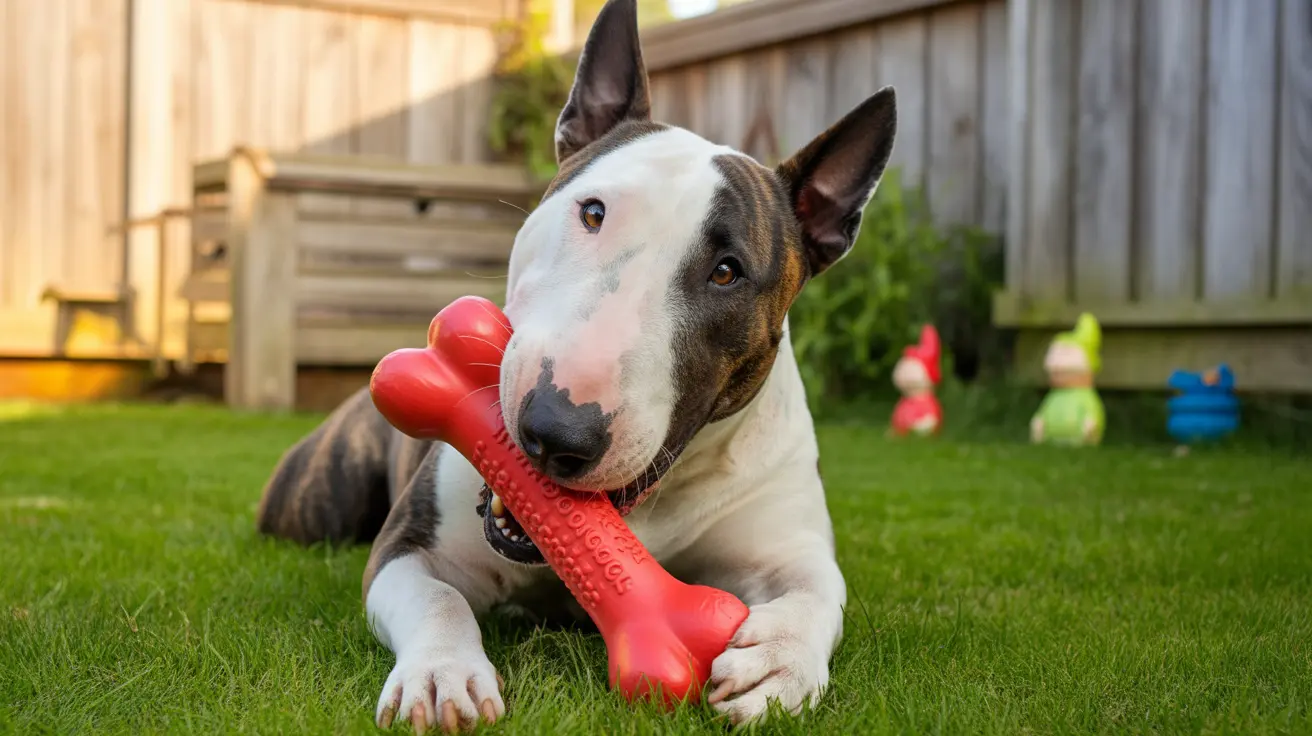Understanding Bull Terrier Bite Force PSI
While exact measurements specific to Bull Terriers are not documented in peer-reviewed research, credible sources indicate their bite force likely falls within the upper range of typical domestic dogs, approximately 200-320 PSI. This placement considers their muscular build, jaw structure, and size relative to other breeds.
- Head and jaw morphology
- Overall size and muscle mass
- Individual variation
- Age and health status
Comparing Bite Forces Among Dog Breeds
To put Bull Terrier bite force in perspective, here's how they compare to other well-known breeds:
- Cane Corso: ~700 PSI
- Rottweiler: ~328 PSI
- American Bulldog: ~305 PSI
- German Shepherd: ~238 PSI
- Average domestic dog: ~235 PSI
Bull Terriers likely rank in the upper portion of typical domestic dogs, though below giant mastiff-type breeds in terms of absolute bite force.
Managing Bull Terrier Jaw Strength
Responsible ownership includes properly channeling a Bull Terrier's natural jaw strength. Essential management strategies include:
- Providing appropriate chew toys designed for strong chewers
- Implementing consistent training from an early age
- Ensuring adequate exercise and mental stimulation
- Maintaining regular veterinary care for dental health
Training and Socialization Impact
A Bull Terrier's bite potential is more influenced by training and socialization than raw bite force. Early and consistent positive reinforcement training helps develop a well-adjusted dog who can properly control their jaw strength.
- Bite inhibition exercises from puppyhood
- Proper socialization with people and other animals
- Impulse control training
- Positive reinforcement methods
Frequently Asked Questions
What is the estimated bite force of an English Bull Terrier in PSI compared to other dog breeds?
English Bull Terriers likely have a bite force between 200-320 PSI, placing them in the upper range of typical domestic dogs but below giant breeds like the Cane Corso or Kangal.
Why does the English Bull Terrier have a relatively strong bite force?
Their strong bite force comes from their muscular build, brachycephalic skull shape, and robust jaw structure - features developed through their historical breeding as both working and show dogs.
How does training and socialization affect the bite risk of a Bull Terrier?
Proper training and socialization significantly reduce bite risk by teaching the dog appropriate behavior, bite inhibition, and impulse control. Well-socialized Bull Terriers are typically gentle and controlled with their jaw strength.
What are the best ways to manage and channel the Bull Terrier's strong jaw strength safely at home?
Provide durable chew toys, engage in structured play activities, maintain consistent training, and ensure adequate exercise and mental stimulation to safely channel their jaw strength.
Are Bull Terriers more likely to bite than other breeds due to their bite force?
No, bite likelihood is determined by training, socialization, and individual temperament rather than bite force. Well-trained Bull Terriers are not more likely to bite than other breeds.
Conclusion
While English Bull Terriers possess significant bite force, their strength should be understood within the context of responsible ownership, proper training, and appropriate management. With proper care and training, these loyal and charismatic dogs can be wonderful family companions who use their jaw strength appropriately and safely.






